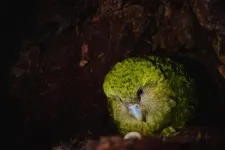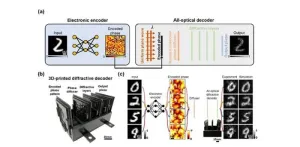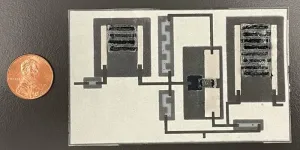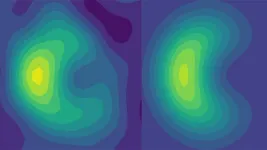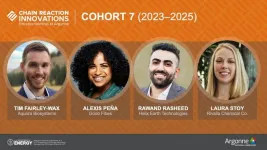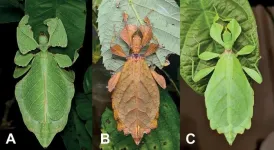(Press-News.org) Playing a Mozart lullaby may help reduce the pain experienced by newborn babies undergoing a heel prick blood test, according to a randomised, blinded clinical trial involving 100 infants published in Pediatric Research.
Saminathan Anbalagan and colleagues measured the pain levels of newborn infants undergoing a heel prick blood test as part of routine screening for conditions such as jaundice and phenylketonuria (PKU) in New York City, New York, USA between April 2019 and February 2020. Infants were, on average, two days old and born at 39 gestational weeks, while 53% were male and 61% were Hispanic. As part of standard care, all infants were given 0.5 millilitres of sugar solution two minutes before the heel prick was performed. An investigator wearing noise-cancelling headphones assessed the infants’ pain levels prior to, during, and after the heel prick. Pain levels were determined according to the infants’ facial expressions, degree of crying, breathing patterns, limb movements, and levels of alertness.
54 of the 100 infants listened to an instrumental Mozart lullaby for 20 minutes prior to and during the heel prick and for five minutes afterwards, while the remaining infants did not listen to any music. The authors accounted for the potential influence of other sensory inputs on pain levels by consistently performing the procedure in a quiet, dimly lit room at an ambient temperature and by not providing infants with pacifiers or physical comfort.
The authors observed similar pain levels in both groups of infants prior to the heel prick, with both groups having median pain scores of zero, out of a maximum possible score of seven. However, the median pain score of infants who listened to the lullaby was significantly lower during and immediately after the heel prick, compared to those who did not listen to music. The pain scores of infants that listened to the lullaby were four during the heel prick, zero at one minute after the procedure, and zero at two minutes after the heel prick, while the pain scores of those that did not listen to the lullaby were seven, 5.5 and two at the same time points. The authors did not observe significant differences in the median pain scores of infants in both groups three minutes after the procedure.
The findings suggest that recorded music may be an effective method of pain relief in newborn infants undergoing minor procedures. The authors suggest that future research could investigate whether recordings of parental voices can also reduce pain in newborns during minor procedures, as well as exploring the influence of physical comfort from caregivers, in addition to music, on pain levels.
###
Notes for editors
The music used in the study is available on YouTube at the following link - “Deep Sleep” from Bedtime Mozart: Classical Lullabies for Babies (2011).
Article details
Music for pain relief of minor procedures in term neonates
DOI: 10.1038/s41390-023-02746-4
Corresponding Author:
Saminathan Anbalagan
Lincoln Medical & Mental Health Center, Bronx, NY, USA
Email: iswami189@gmail.com
Please link to the article in online versions of your report (the URL will go live after the embargo ends): https://www.nature.com/articles/s41390-023-02746-4.
END
Medicine: Mozart lullaby may relive pain in newborns during blood spot test
2023-08-29
ELSE PRESS RELEASES FROM THIS DATE:
Saving species from extinction - high-quality kākāpō population sequencing provides breakthrough in understanding key conservation genetics
2023-08-29
High-quality sequencing of nearly the entire kākāpō population, funded through a Genomics Aotearoa project, is helping New Zealand to manage the health of this critically endangered species.
Not only is it already making a difference to kākāpō survival, but establishing sequencing methods to work with populations under threat is also likely to be the foundation for the future of endangered wildlife science in New Zealand and the rest of the world.
The state-of-the-art methods developed by Dr. Joseph Guhlin ...
High-fidelity transmission of information via novel electronic-optical system
2023-08-28
Transferring optical information in free space with large bandwidth and high transmission capacity has gained significant attention in various applications, such as remote sensing, underwater communication, and medical devices. Nevertheless, unpredictable, unknown phase perturbations or random diffusers within the optical path pose great challenges, limiting the high-fidelity transmission of optical data in free space. Adaptive optics presents a potential solution that can correct for random distortions ...
Two studies demonstrate the benefits and limitations of artificial intelligence in colonoscopy
2023-08-28
Embargoed for release until 5:00 p.m. ET on Monday 28 August 2023
Annals of Internal Medicine Tip Sheet
@Annalsofim
Below please find summaries of new articles that will be published in the next issue of Annals of Internal Medicine. The summaries are not intended to substitute for the full articles as a source of information. This information is under strict embargo and by taking it into possession, media representatives are committing to the terms of the embargo not only on their own behalf, but also on behalf of the ...
Professor receives grant to develop electronic devices made entirely of paper
2023-08-28
Imagine if you could build an electronic device made entirely of paper. A nontoxic, cost-effective and biodegradable alternative to silicon- and plastic-based components would be a game-changer for a planet quickly filling up with the “e-waste” of discarded gadgets and single-use sensors.
That’s the vision of Binghamton University Professor Seokheun (Sean) Choi. He’s worked for years creating better biobatteries that use bacteria or human sweat to generate energy. Some of those batteries have been paper-based, and now he hopes to apply that knowledge to ...
Quantum computer unveils atomic dynamics of light-sensitive molecules
2023-08-28
DURHAM, N.C. – Researchers at Duke University have implemented a quantum-based method to observe a quantum effect in the way light-absorbing molecules interact with incoming photons. Known as a conical intersection, the effect puts limitations on the paths molecules can take to change between different configurations.
The observation method makes use of a quantum simulator, developed from research in quantum computing, and addresses a long-standing, fundamental question in chemistry critical to processes such as photosynthesis, vision and photocatalysis. It is also an example of ...
Enter Sandman: Study shows dreams spill over into the workplace and can be channeled for productivity
2023-08-28
Before heading to work each day, most people have spent the night dreaming. Studies show that on any given morning, about 40 percent of the working population recalls their dreams.
New research from the University of Notre Dame shows that when dreams are first recalled, people often draw connections between their dreams and waking lives, and the connections they draw alter how they think, feel and act at work.
“A Spillover Model of Dreams and Work Behavior: How Dream Meaning Ascription Promotes Awe and Employee Resilience” is forthcoming in the Academy of Management Journal from lead author Casher Belinda, assistant professor ...
Gender disparities limit chances for women PhD students training to be new inventors
2023-08-28
In the innovation economy, individuals with STEM PhDs are a critical source of human capital, with nearly 60 percent of PhDs in STEM fields— such as engineering, chemistry and biology—being employed outside of universities. These students are increasingly contributing to commercial science through patenting. New research from MIT Sloan School of Management and Copenhagen Business School investigated the training of these PhD students to better understand the pipeline and preparation of new inventors.
Conducted by Fiona Murray, MIT Sloan professor and associate dean for Innovation and Inclusion, ...
New startups join Argonne’s entrepreneurship program
2023-08-28
Four new innovators recently joined Chain Reaction Innovations (CRI), the Lab-Embedded Entrepreneurship Program at the U.S. Department of Energy’s (DOE’s) Argonne National Laboratory, as part of the program’s seventh cohort.
Each innovator will collaborate with a host scientist at Argonne while embedded full-time at the laboratory. Innovators plan to develop clean energy startups that reduce greenhouse gas emissions and increase U.S. competitiveness in emerging energy technologies. The ...
Curious and cryptic: new leaf insects discovered
2023-08-28
An international research team including the University of Göttingen has described seven previously unknown species of leaf insects, also known as walking leaves. The insects belong to the stick and leaf insect order, which are known for their unusual appearance: they look confusingly similar to parts of plants such as twigs, bark or – in the case of leaf insects – leaves. This sophisticated camouflage provides excellent protection from predators as well as presenting a challenge to researchers. Genetic analysis enabled the researchers to discover “cryptic species”, which cannot be distinguished by their external appearance alone. The findings are not only ...
Preparing clinicians for the international anti-LGBTQI+ crisis
2023-08-28
Contact: Maria Ober, 617-224-8963, mpober@bu.edu
Preparing Clinicians for the International Anti-LGBTQI+ Crisis
Medical community should build systems that are responsive to this population
(Boston)—Lesbian, gay, bisexual, transgender, queer, intersex and additional sexual and gender minority (LGBTQI+) people in every region of the world face marginalization and oppression. At least 67 countries ban sexual conduct between consenting adults of the same sex. According to a report from the ...
